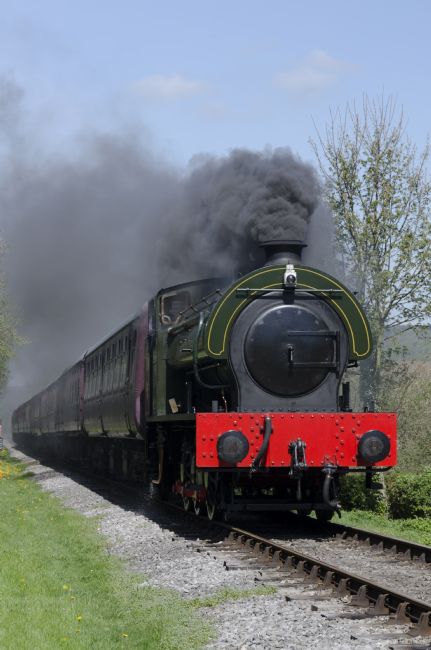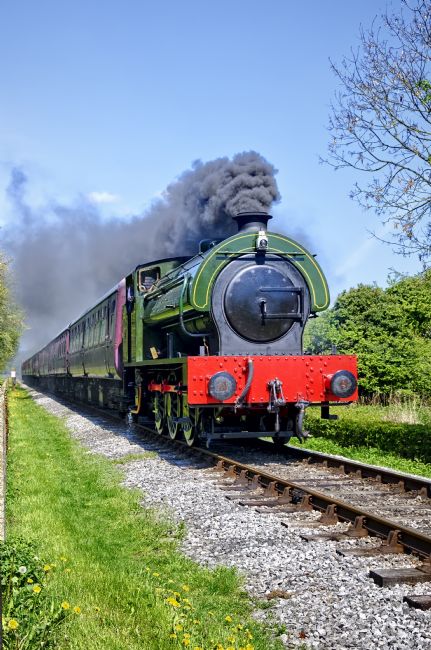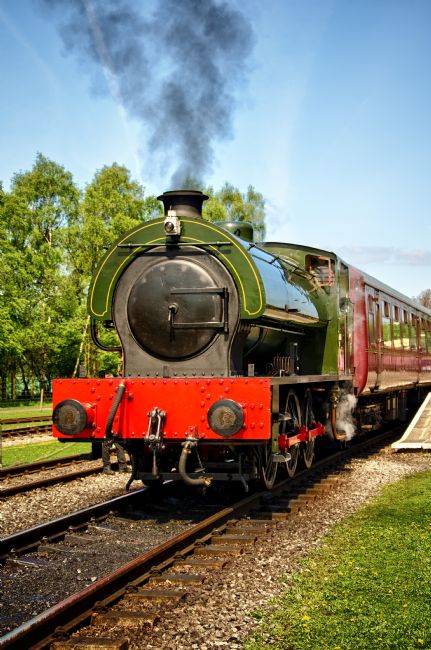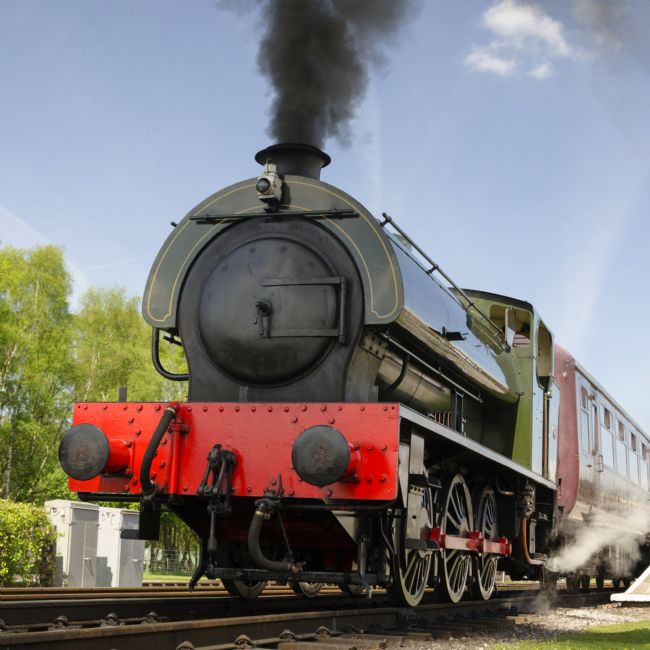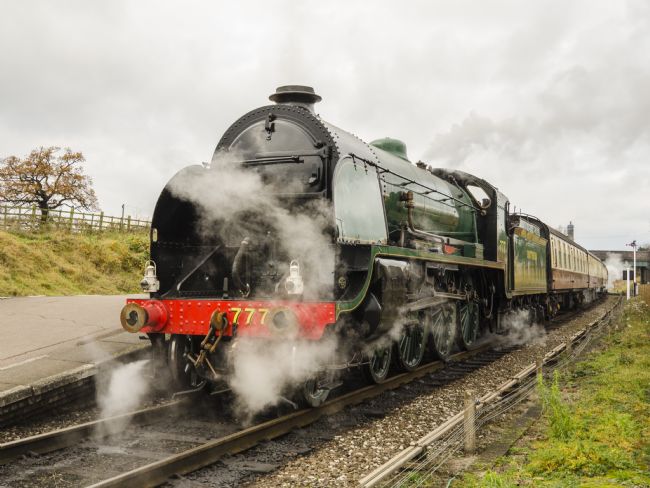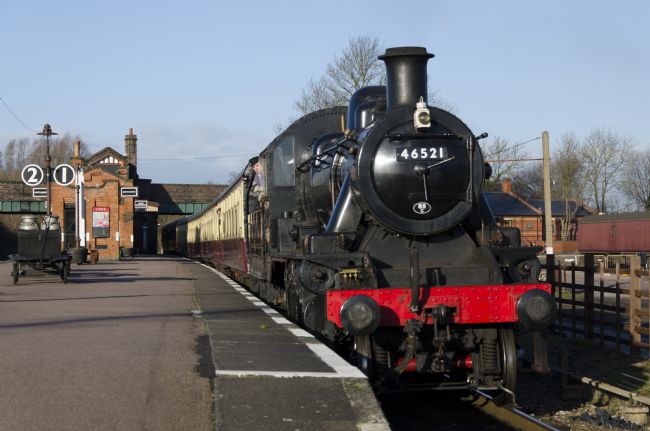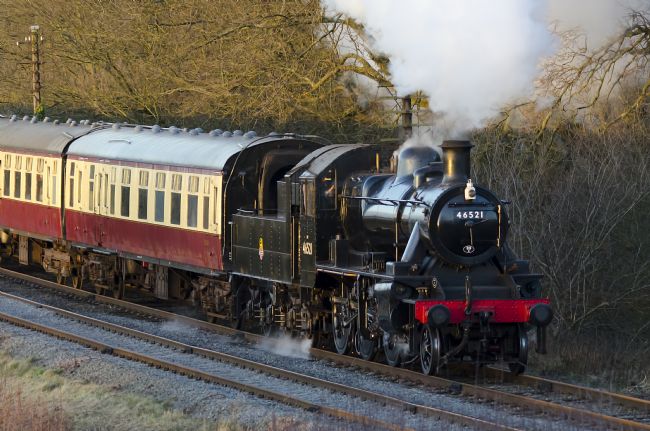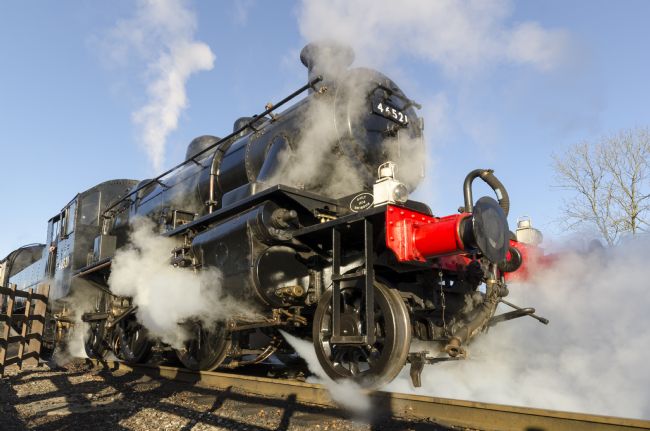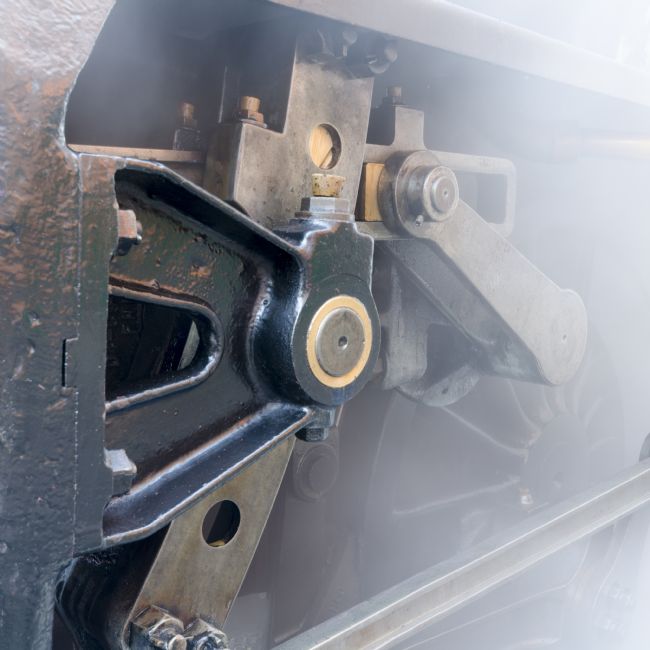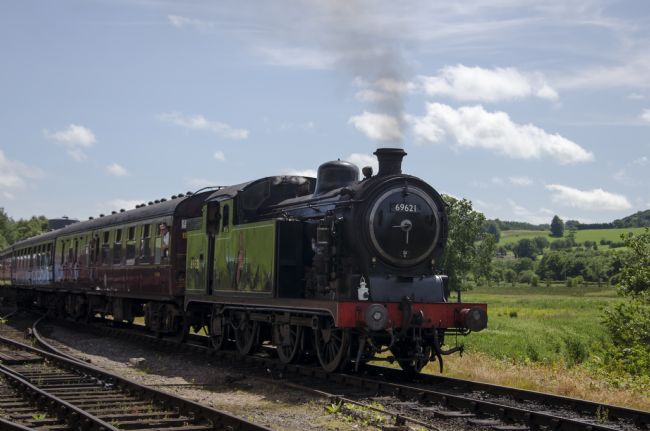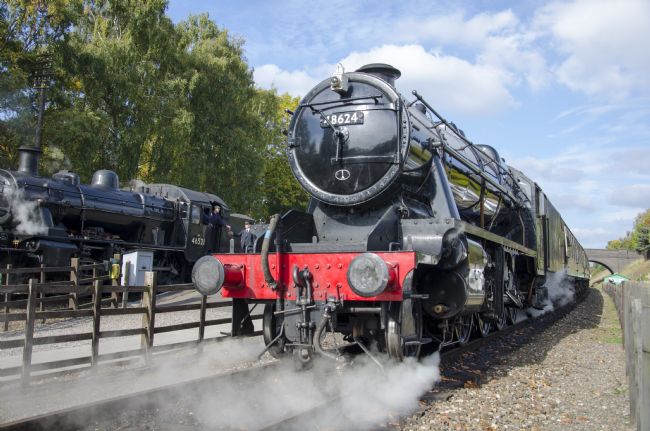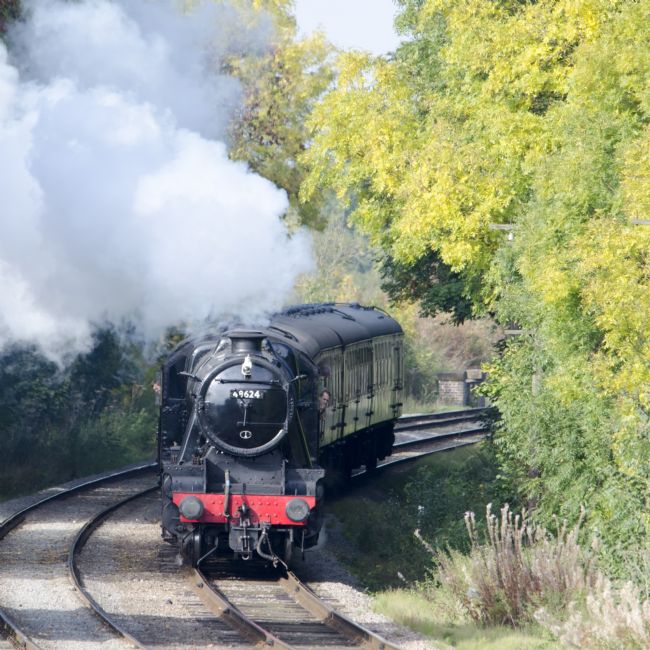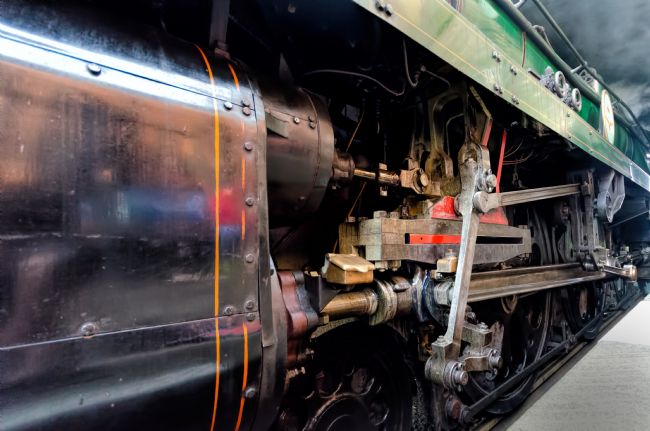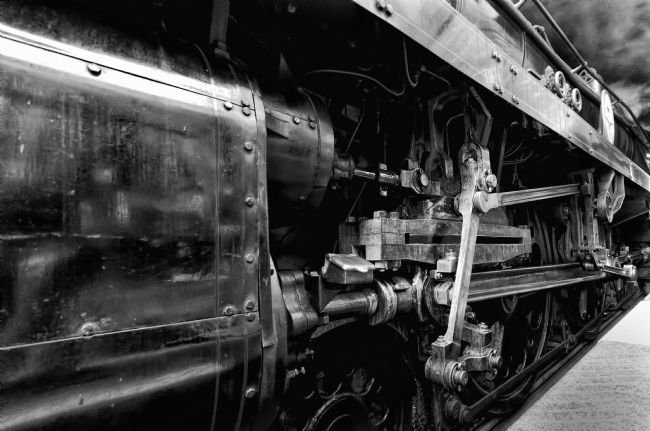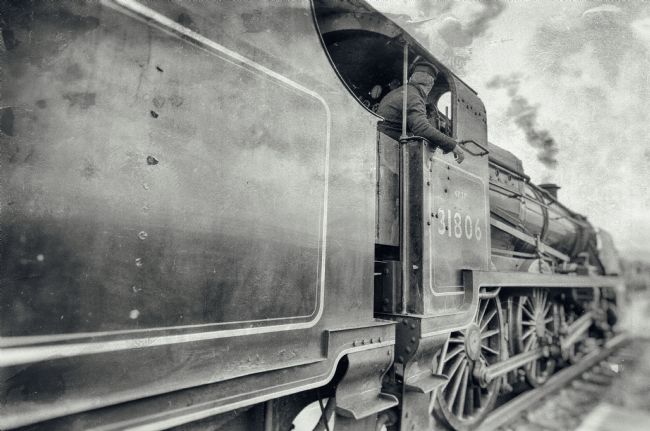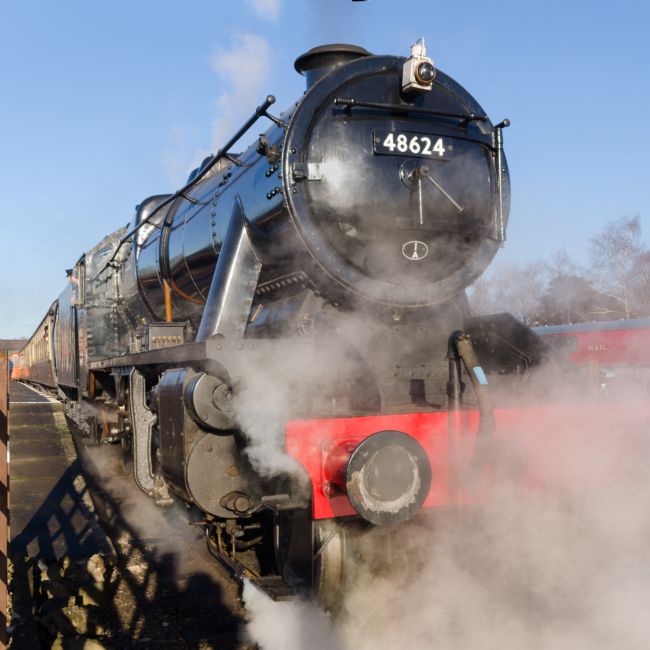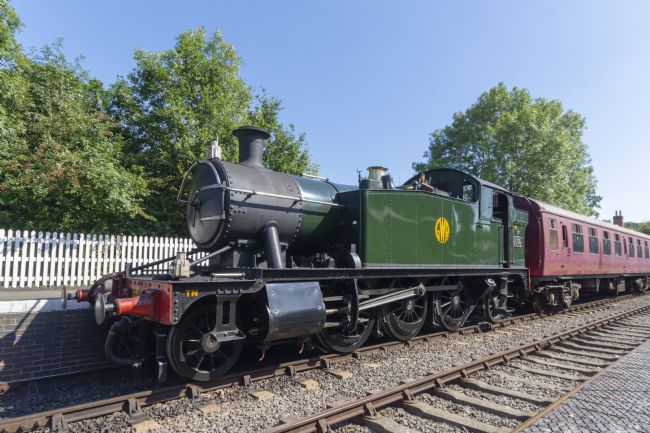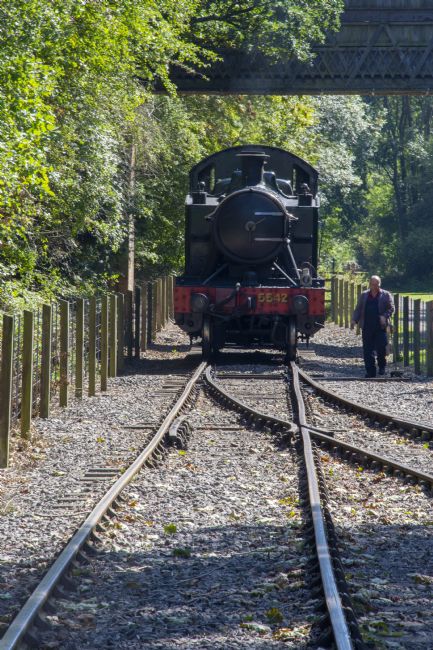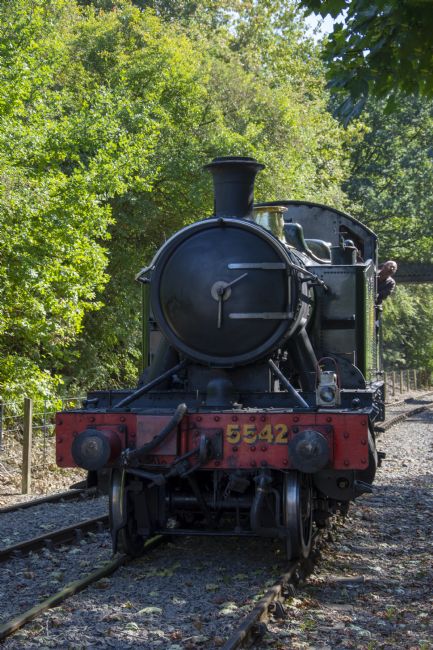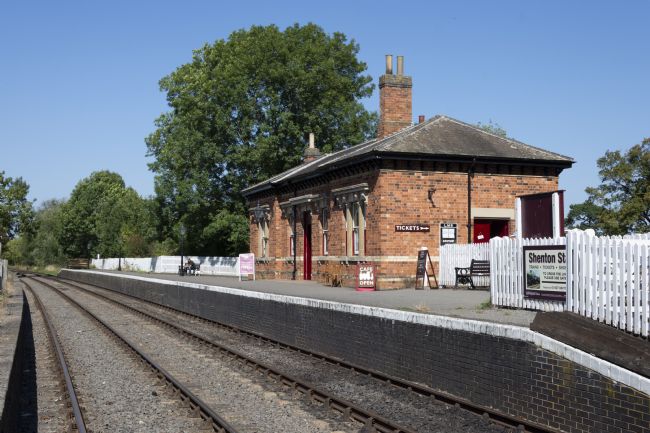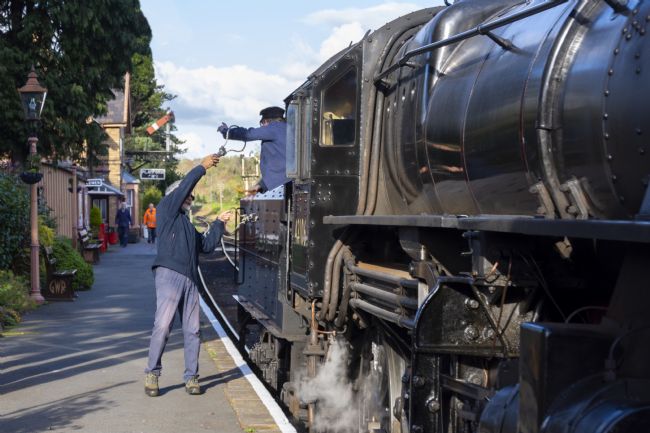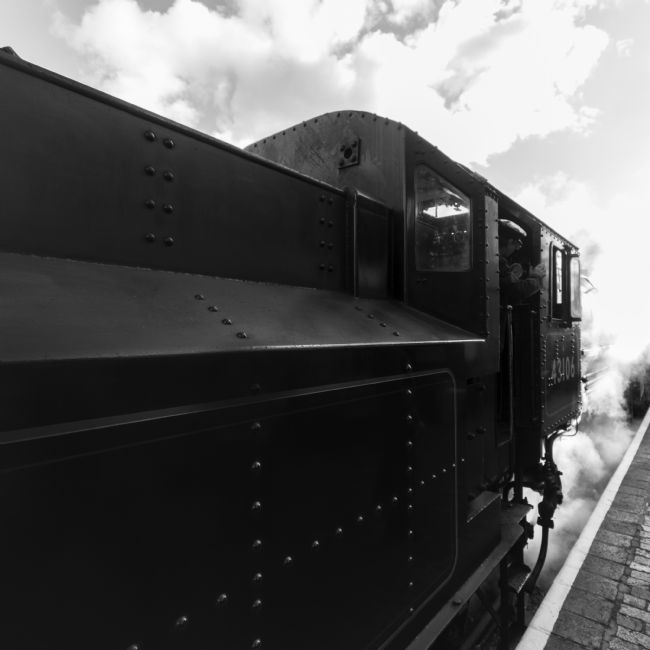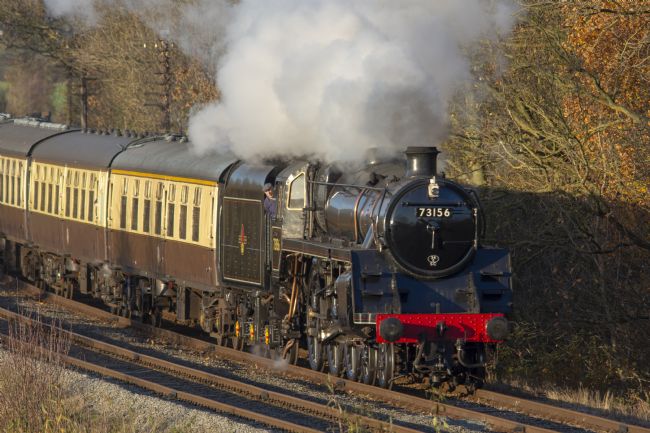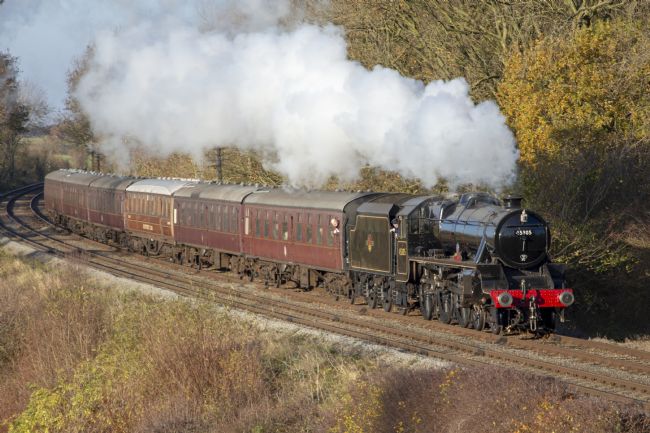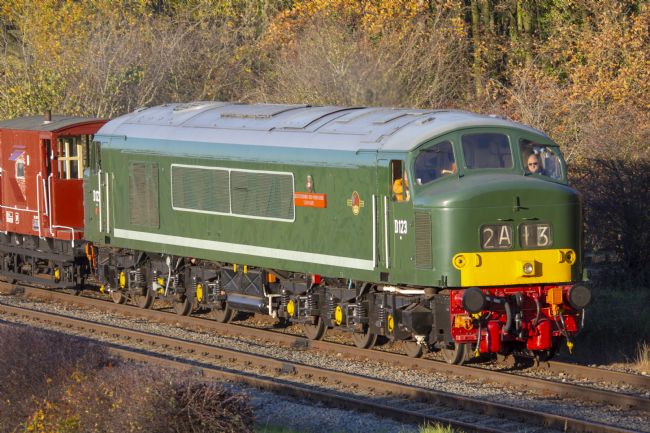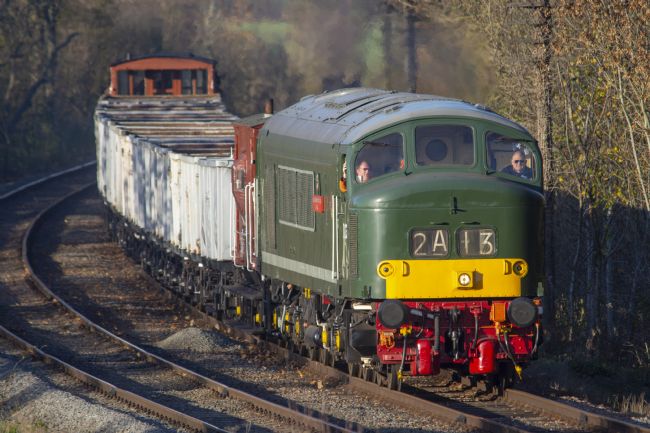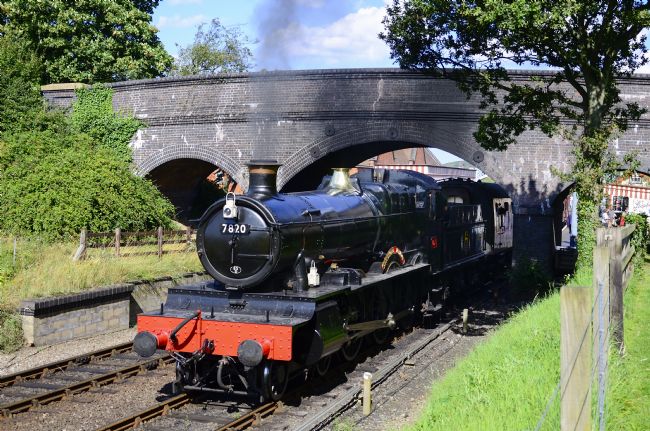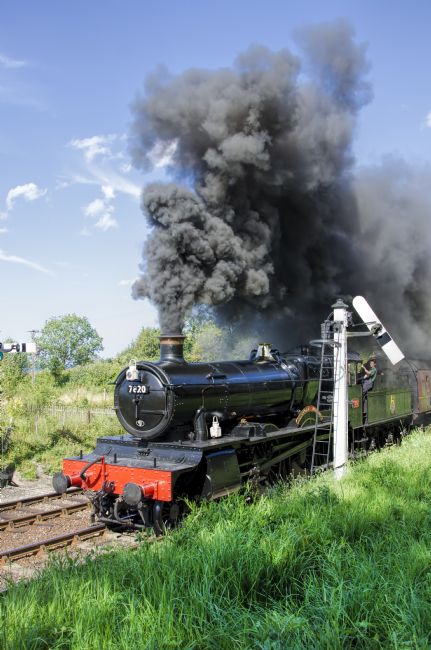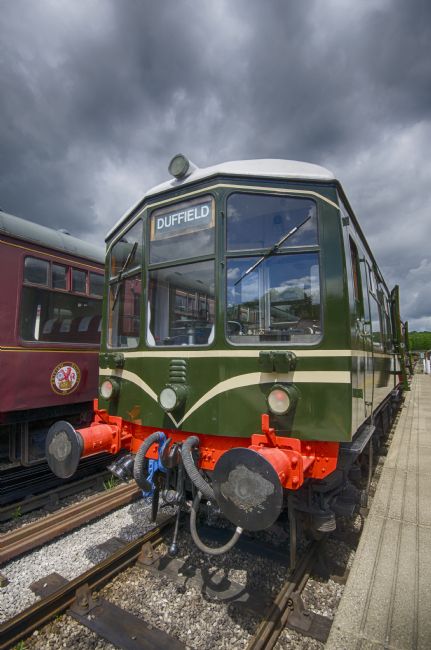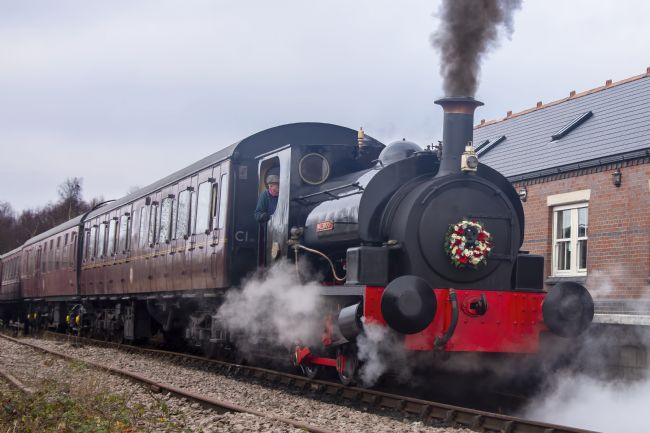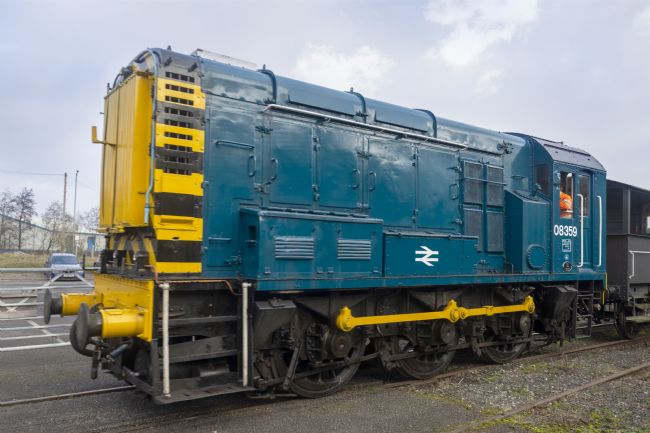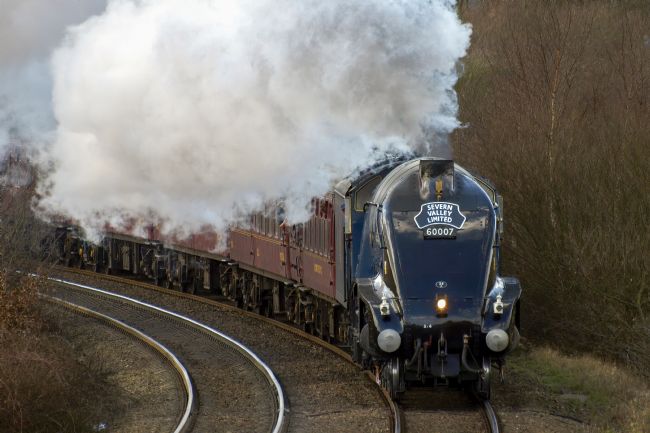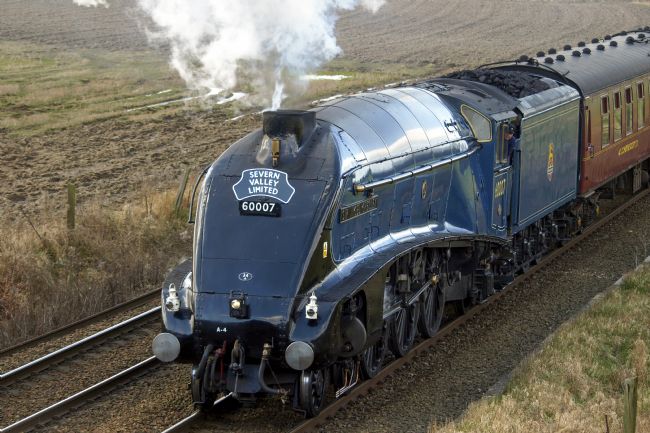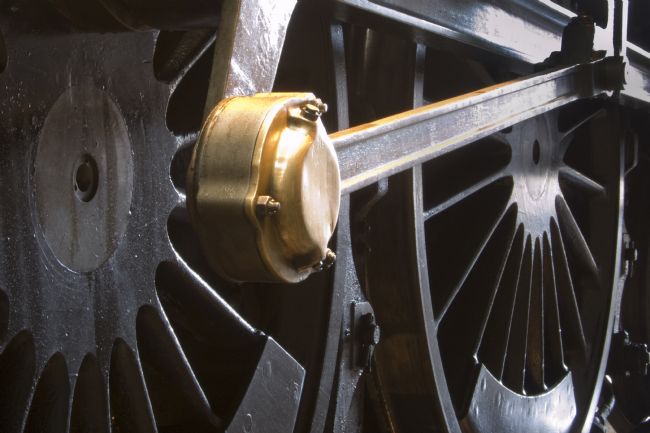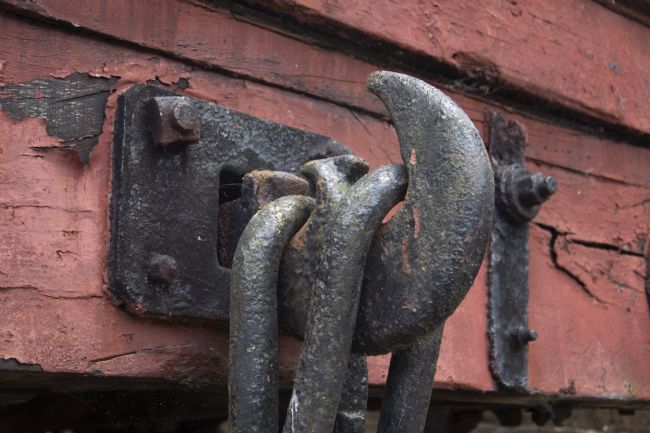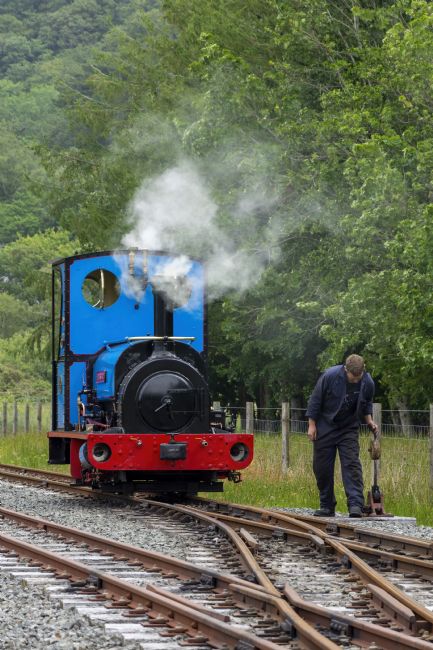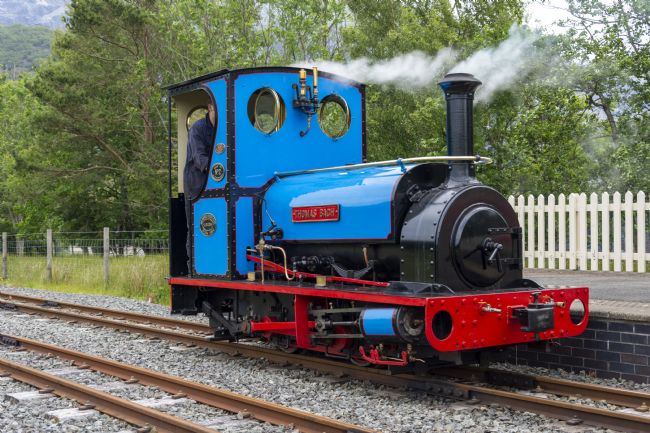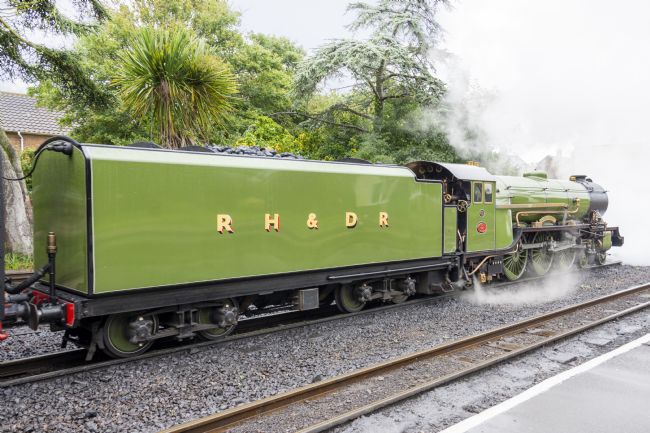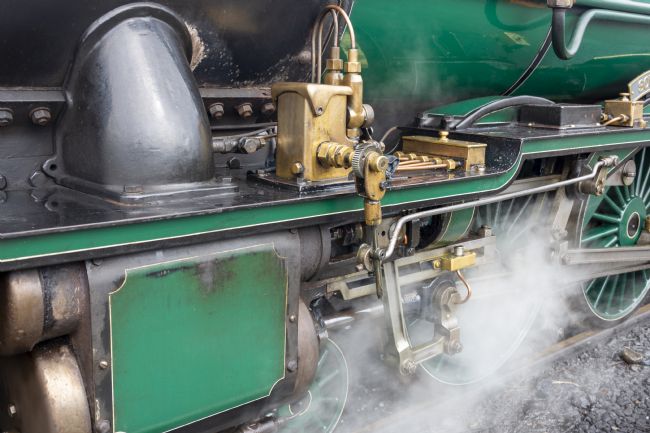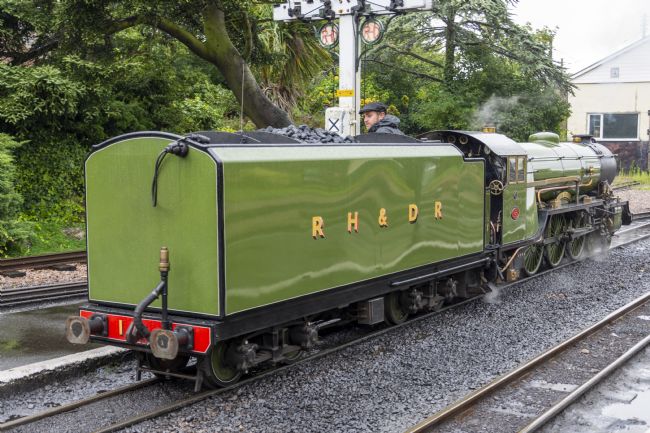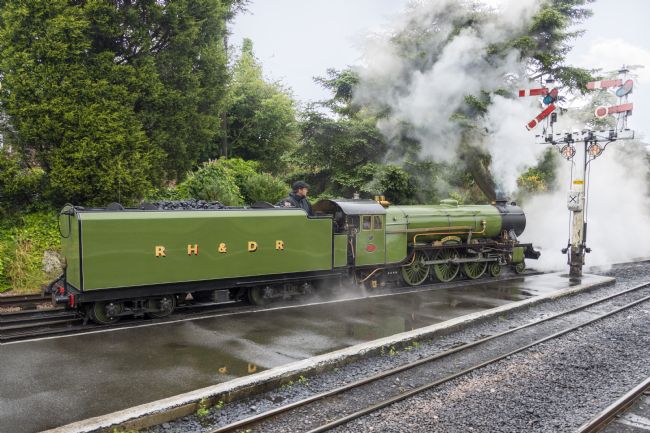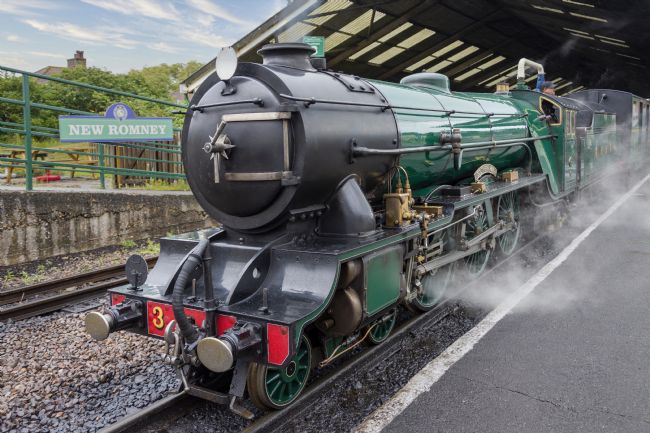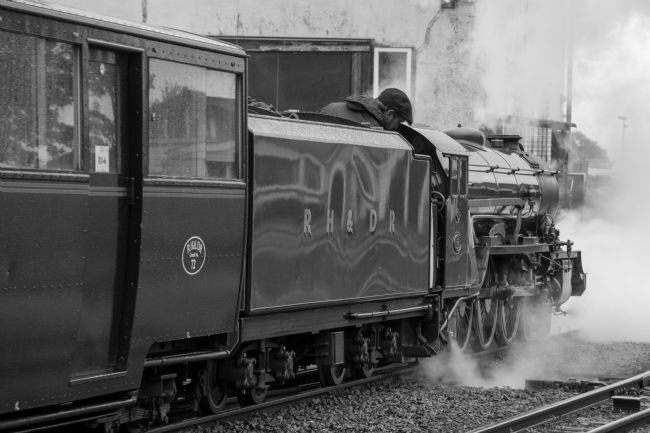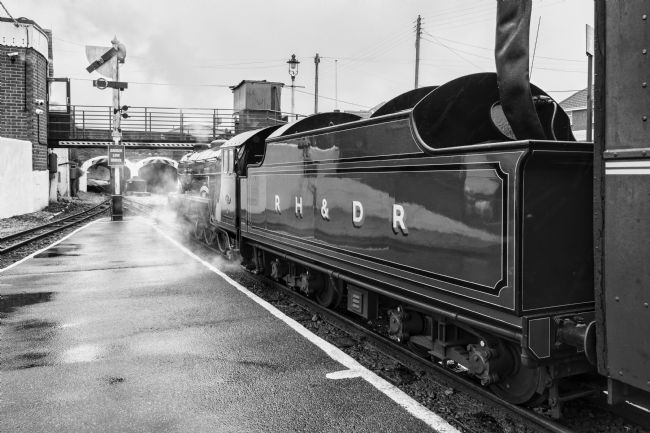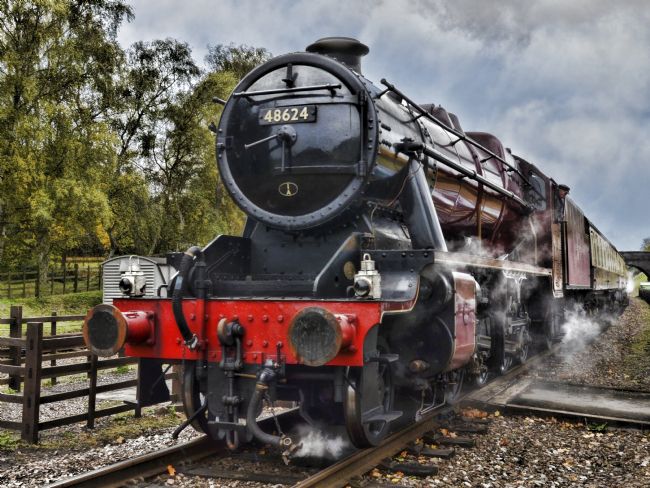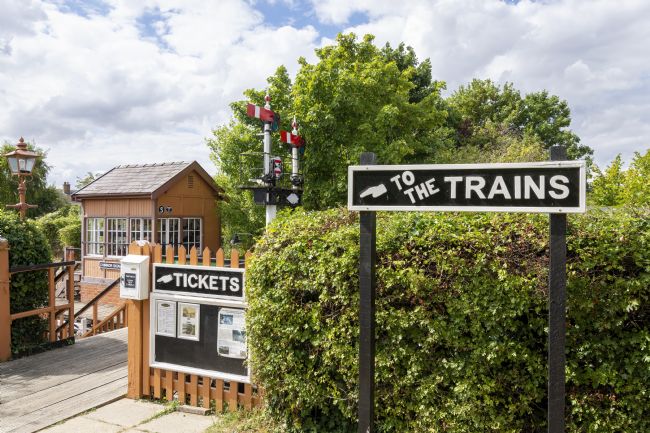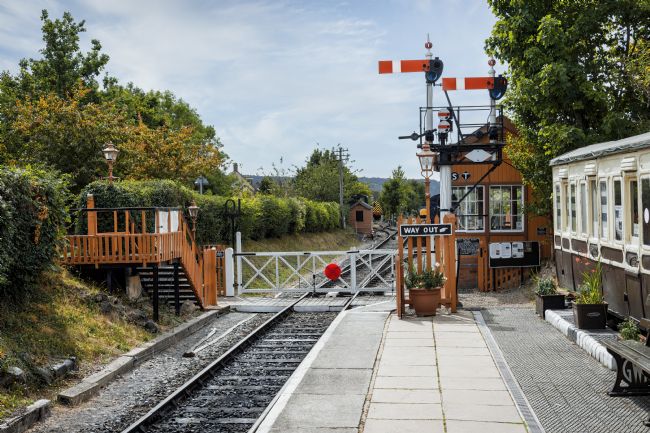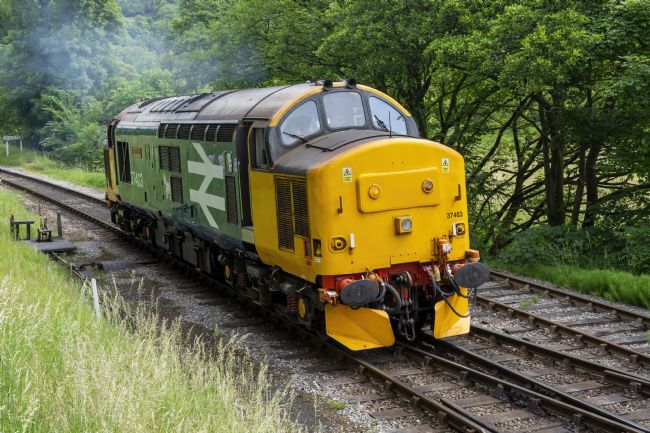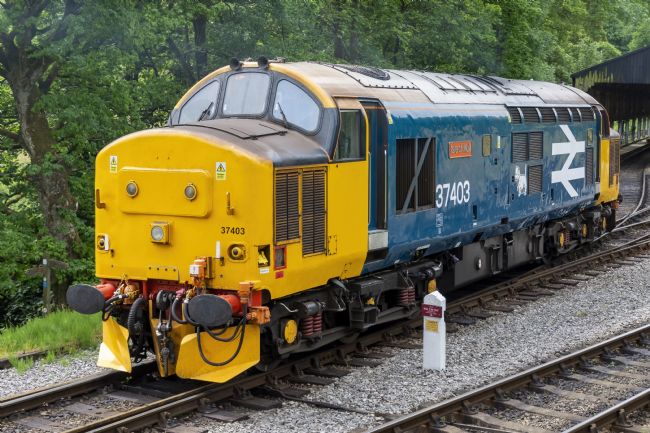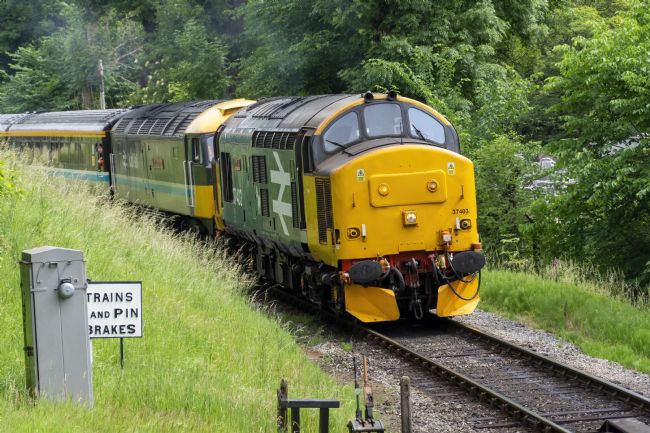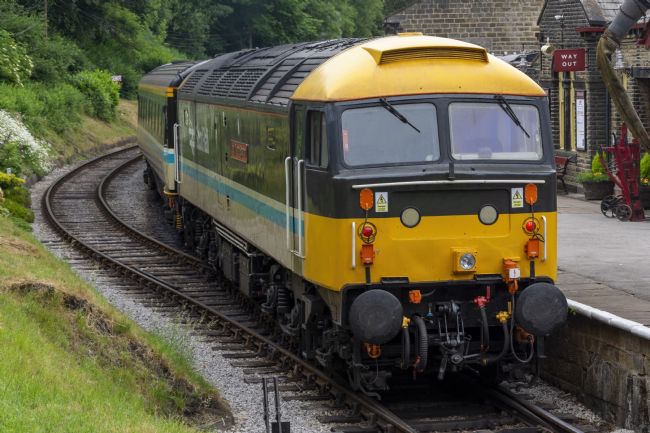Lord Phil a 0-6-0 ST locomotive pulling a train on Peak Rail, Derbyshire. Lord Phil is an 'Austerity' locomotive - built during WW2 by Hunslet as HE 2868 in 1943 and was subsequently rebuilt by them incorporating some modifications that increased power and efficiency as 3883.
Lord Phil a 0-6-0 ST locomotive pulling a train on Peak Rail, Derbyshire. Lord Phil is an 'Austerity' locomotive - built during WW2 by Hunslet as HE 2868 in 1943 and was subsequently rebuilt by them incorporating some modifications that increased power and efficiency as 3883.
Lord Phil a 0-6-0 ST locomotive at Rowsley station, Peak Rail, Derbyshire. Lord Phil is an 'Austerity' locomotive - built during WW2 by Hunslet as HE 2868 in 1943 and was subsequently rebuilt by them incorporating some modifications that increased power and efficiency as 3883.
Lord Phil a 0-6-0 ST locomotive pulling a train on Peak Rail, Derbyshire. Lord Phil is an 'Austerity' locomotive - built during WW2 by Hunslet as HE 2868 in 1943 and was subsequently rebuilt by them incorporating some modifications that increased power and efficiency as 3883.
Sir Lamiel is a King Arthur class 4-6-0 steam locomotive seen here at a heritage railway ready to leave the station
Steam locomotive 46521 is an LMS Class 2 2-6-0 originally completed in 1953. After a long career it went first to the Severn Valley Railway then to it's current home - Great Central Railway where it continues to run regularly. Seen here at Quorn Station.
Steam locomotive 46521 is an LMS Class 2 2-6-0 originally completed in 1953. After a long career it went first to the Severn Valley Railway then to its current home - Great Central Railway where it continues to run regularly. Seen here at Kinchley curve.
Wide angle close up image of a steam locomotive. Steam swirls around it moments before it pulls away. As well as the obvious large clouds pretty much the entire front end of the locomotive has a small steam cloud around it giving a slightly 'foggy' effect.
Close up image of a steam locomotive as steam swirls around it moments before it pulls away. The edge of the platform just visible in the lower right corner.
LNER N7 No 69621 approaching Cheddleton station on a restored train line.
LMS 48624 on platform 1 in the foreground with LMS 46521 on platform 2 at Rothley station on the Great Central Railway.
On the Great Central Railway you'll find Kinchley curve - and on that curve you'll find this fabulous locomotive 48624.
34053 Sir Keith Park - a Battle of Britain class steam locomotive with a length of 67 feet and weighing in at over 100 tons. This 4-6-2 light Pacific was one of 110 built-in the West Country/ Battle of Britain Class, for use on the Southern Railway and was built at Brighton in January 1947
34053 Sir Keith Park - a Battle of Britain class steam locomotive with a length of 67 feet and weighing in at over 100 tons. This 4-6-2 light Pacific was one of 110 built-in the West Country/ Battle of Britain Class, for use on the Southern Railway and was built at Brighton in January 1947
At 63 tonnes and built in 1926 this Maunsell U Class Mogul No. 31806 is seen here about to depart. Treated to a 'wet plate' digital treatment this image has more grit than a budgie cage floor and more grain than a decent sized silo - but rather fitting for such an industrial masterpiece.
Stanier class 8F 2-8-0 Heavy steam locomotives were designed as freight movers but this one is seen in steam at Great Central Railway on a cold, frosty day.
5542 is a GWR 4575 Class 2-6-2T small prairie tank engine and is seen here at Shenton station on The Battlefield Line. Originally built in 1928 she spent 33 years working followed by 14 years on a scrap heap until being lovingly restored to full working condition.
5542 is a GWR 4575 Class 2-6-2T small prairie tank engine and is seen here at the end of the line ready to do the runaround at Shenton station on The Battlefield Line. Originally built in 1928 she spent 33 years working followed by 14 years on a scrap heap until being lovingly restored to full working condition.
5542 is a GWR 4575 Class 2-6-2T small prairie tank engine and is seen here at Shenton station on The Battlefield Line. Originally built in 1928 she spent 33 years working followed by 14 years on a scrap heap until being lovingly restored to full working condition.
Shenton station is one end of The Battlefield Line and where the locomotives perform a run around so they pull rather than push the carriages. Seen here is one man and his dog patiently waiting in the autumn sunshine for the train arriving at . . . .
68013 Royal Pioneer steam locomotive with several carriages seen here on the Peakrail line in Derbyshire
Originally built in 1960 this locomotive saw many years active running until 1983. Entering service as D306 it became re-branded as 40106 in the 1970s. It was bought for preservation and named as Atlantic Conveyor in honour of the ship of the same name that was lost in the Falklands conflict. It is also a bit of a movie star having been used as the loco in the film 'Buster' about the great train robbery.
When a single track running line there needs to be a way to prevent two trains meeting by accident. The simple system of a 'key' that effectively locked the points at the far end was the solution. When the train carrying the key for that section reaches the signal box it is handed over so the section of now clear track can be released. Here you see a key exchange, the train crew have handed over the key for the section just cleared (lower key) and collected the key for the next section. The large hoop made it easier to do this as it passed.
43106 'The Flying Pig' is the only surviving example of an Ivatt class 4 steam locomotive and was one of the very last to be withdrawn from the days of steam. Seen here venting steam that is totally obscuring the carriages behind it as it prepares to leave the station. It is for some reason widely known as 'The flying pig'.
73156 is a class 5 4-6-0 steam locomotive that after a sustained restoration effort can now be seen as a regular on the Great Central Railway. Seen here in the wonderfully soft, late afternoon golden hour.
73156 is a class 5 4-6-0 steam locomotive that after a sustained restoration effort can now be seen as a regular on the Great Central Railway. Seen here in the wonderfully soft, late afternoon golden hour.
One of the famous Stanier 5 4-6-0 locomotives seen here hauling passenger carriages on the Great Central Railway in Leicestershire.
Seen here during the golden hour D123 is a preserved diesel locomotive from the Peak class and bears the name Leicestershire and Derbyshire Yeomanry.
Seen here during the golden hour D123 is a preserved diesel locomotive from the Peak class and bears the name Leicestershire and Derbyshire Yeomanry.
Dinmore Manor, 7820 is a 4-6-0 steam locomotive built in 1950 by British Railways working until she was withdrawn in 1965 then effectively sold for scrap. Several changes of hands took pace before restoration at Tyesley, returning to steam in 1995. Seen here on the North Norfolk railway at Weybourne.
Dinmore Manor, 7820 is a 4-6-0 steam locomotive built in 1950 by British Railways working until she was withdrawn in 1965 then effectively sold for scrap. Several changes of hands took pace before restoration at Tyesley, returning to steam in 1995. Seen here on the North Norfolk railway at Weybourne.
Iris is a wonderfully restored Derby Lightweight diesel railcar and can be found at work on the Ecclesbourne Valley Railway, Wirksworth, Derbyshire. Now running as M79900.
Built in 1906 and operated in Waleswood colliery - hence the name. A 0-4-0 saddle tank it has undergone several restorations and rebuilds, the latest of which has seen it return to active service on the Chasewater railway in Cannock, Staffordshire. This image was taken from the adjacent public footpath.
This charming little diesel locomotive is one of just under 1,000 of its type built. It is a diesel electric and like many such engines moves from preserved line to preserved line so is well known to enthusiasts. Seen here at Chasewater, Cannock, Staffordshire and taken from the adjacent footpath.
60007 Sir Nigel Gresley was the 100th built of this design and like most locomotives went through a variety of number systems through its life. It was the first locomotive to run a scheduled service of over 100mph and on the maiden trip on 23rd May 1959 it achieved 112mph setting the official post war record.
60007 Sir Nigel Gresley was the 100th built of this design and like most locomotives went through a variety of number systems through its life. It was the first locomotive to run a scheduled service of over 100mph and on the maiden trip on 23rd May 1959 it achieved 112mph setting the official post war record.
Very close up detail of a steam train wheel
Seen on an old railway wagon coupling hooks and chain links were, and indeed still are an integral part of the rail system. As the paint and wood slowly decay around it, the hook and chain remain comparatively untouched by time.
I've no idea why it is known as throwing the points, but here we are at Llanberis with the rather cute Thomas Bach locomotive as one of the crew does indeed throw the points.
Thomas Bach is a rather cute little steam locomotive that operates at Llanberis.
The steam locomotive Green Goddess on the Romney, Hythe and Dymchurch railway is a 1/3 scale and seen here venting steam before setting off.
The 1/3 scale steam lovomotive Southern Star on the Romney, Hythe and Dymchurch railway gently steaming to itself whilst waiting for passengers to alight.
Loco number 1 on the Romney, Hythe and Dymchurch railway backs up to collect its carriages before starting a run. This line uses 1/3 size rolling stock and is a rather enjoyable way to spend a day.
The steam locomotive Green Goddess on the Romney, Hythe and Dymchurch railway is a 1/3 scale (the driver isn't really a giant) and seen here waiting for a signal.
The 1/3 scale steam locomotive Southern Star on the Romney, Hythe and Dymchurch railway gently steaming to itself whilst waiting for passengers to alight.
Loco number 1 on the Romney, Hythe and Dymchurch railway preparing for another passenger run. This line uses 1/3 size rolling stock and is a rather enjoyable way to spend a day.
A one third scale steam locomotive at the Romney, Hythe and Dymchurch railway takes on water before setting off on another journey.
The Stanier class steam locomotive seen here leaving Rothley Station on the Great Central Railway.
On the wonderfully named Chinnor and Princes Risborough railway is the rather lovely Chinnor station. Run by volunteers as a heritage railway it makes for a very good day out and regularly runs specialised events.
On the wonderfully named Chinnor and Princes Risborough railway is the rather lovely Chinnor station. Run by volunteers as a heritage railway it makes for a very good day out and regularly runs specialised events.
Isle of Mull 37403 is seen here just outside Oxenhope Station on the Keighley and Worth Valley Railway. It was being used as part of the railway's diesel gala weekend, often double heading with another loco. Delivered in 1965 it was originally designated as a type 3 D6607.
Isle of Mull 37403 is seen here at the sidings of Oxenhope Station on the Keighley and Worth Valley Railway. It was being used as part of the railway's diesel gala weekend, often double heading with another loco. Delivered in 1965 it was originally designated as a type 3 D6607.
Isle of Mull 37403 (closest and Lady Diana Spencer 47712 behind are seen here double heading just outside Oxenhope Station on the Keighley and Worth Valley Railway. Being used as part of the railway's diesel gala weekend.
Seen here at Oxenhope Station on the Keighley and Worth Valley Railway. 47712 is a class 47 diesel electric loco that since being built in 1966 has carried many names, only becoming Lady Diana Spencer in 1995.
